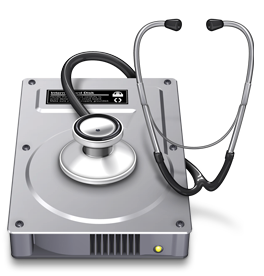By James Hanback
The skies overhead are calm and blue. The birds are singing. The world seems to have clicked into place. You now know what an IP version 6 (IPv6) address is and how to format it. No one outside of a certification exam has quizzed you on the particulars of the IPv6 standard, and your boss doesn’t even know how to connect to the Wi-Fi, so it’s time to kick back and bask in the glow of your soon-to-be-certified skills because you know everything you need to know about IPv6.
Riding the Storm Out: IPv6 Demystified Part II
Jun 18, 2014 9:29:00 AM / by Kelson Lawrence posted in Local Unicast, Anycast, IPv6 Triple Point Address Space, Multicast
Roll with the Changes: IPv6 Demystified Part I
Jun 11, 2014 8:25:00 AM / by Kelson Lawrence posted in IPv6, compare IPv4 and IPv6, shorthand, IPv6 addressing, IPv6 addressing shorthand, composition, compare IPv4 to IPv6
By James Hanback
There might come a time in your career when the fundamental networking tasks you are now able to perform in your sleep, like subnetting an IP version 4 (IPv4) network, fall into obsolescence. Sure, you were warned. We all were. Although IPv4 addressing is far too ubiquitous to go anywhere anytime soon, and the deployment of IP version 6 (IPv6) has been slow, to say the least, more widespread deployment of IPv6 is coming. Therefore, the ability to understand and implement IPv6 addressing has become a topic contemporaneous on network certification exams, such as the Cisco Certified Network Associate (CCNA) exam, with the ability to understand and implement IPv4 addressing.
.NET Quest, Part V: Installing Boson Software on a BootCamp Partition
Jun 4, 2014 10:09:00 AM / by Kelson Lawrence posted in .NET Quest Part V, Installing Boson Software on a BootCamp Partition
What to Expect: After the Exam
May 28, 2014 1:54:00 PM / by Kelson Lawrence posted in failed certification exam, retake exam, didn't pass
By Michael Aldridge
This is my third of three blog posts in my "What to Expect" series. This blog post will focus on what happens after you've taken a certification exam.
What to Expect: During the Exam
May 14, 2014 8:40:00 AM / by Kelson Lawrence posted in Cisco, What to Expect During the Exam, comptia, taking certification exams
By Michael Aldridge
This is my second of three blog posts in my "What to Expect" series. This blog post will focus on what happens the day of your certification exam.
What to Expect: Before the Exam
May 7, 2014 9:35:00 AM / by Kelson Lawrence posted in Microsoft, Cisco, comptia, passing certification exam, what to expect before the exam
By Michael Aldridge
When my wife became pregnant with our first child, we had no idea what to expect. So we prepared by reading pregnancy books, searching online, taking childbirth classes, and talking to friends who had already gone through the experience. Sure, there were a few things that we weren't prepared for, but we were ready for most of the situations we encountered along the way.
How to Prepare for a Certification Exam
Apr 29, 2014 10:29:00 AM / by Kelson Lawrence posted in Microsoft, Cisco, comptia, How to Prepare for a Certification Exam
By Michael Aldridge
I've got three favorite quotes on preparation:
"Every battle is won before it is ever fought."
- Sun Tzu, The Art of War
"By failing to prepare, you are preparing to fail."
- Benjamin Franklin
"Give me six hours to chop down a tree, and I will spend the first four sharpening the axe."
- Abraham Lincoln
NetSim 9.9 Update | April 23, 2014
Apr 23, 2014 10:57:00 AM / by Kelson Lawrence posted in NetSim, Cisco Network Simulator, update
By Andrew Messier
Hey Everyone,
NetSim 9.9 was released yesterday, 4/22/14. This is a content and application update. It resolves all outstanding ERRATA labs, contains several bug fixes, optimizes every loading configuration in our Standard and Courseware labs, and adds a user engagement feature. Users are now prompted with a new Guided Tips service that briefly outlines the basic features in NetSim.
Boson Training recognized for commitment to quality at CGLPA
Apr 3, 2014 10:37:00 AM / by Kelson Lawrence posted in quality, Boson Training, Cisco Global Learning Partner Awards
Boson Training, LLC, was presented with the Quality Distinction Award at the 2014 Cisco Global Learning Partner Awards, which were held on March 23rd in Las Vegas, Nev. This award is presented annually to Learning Partners in each region who deliver quality training with high customer satisfaction scores. Boson Training is proud to accept this award signifying our commitment to excellence in presenting the highest quality training to our customers. "I am thrilled to work with such a talented team of instructors, at a company that so highly values customer satisfaction," said Andrea Horne, Sales and Operations Manager.
The Seven Layers of Networking – Part III
Apr 2, 2014 9:27:00 AM / by Kelson Lawrence posted in The Internet Layer, The Network Access Layer, The Seven Layers of Networking – Part III, The Transport Layer, The Application Layer, Inter-Layer and Intra-Layer Communication
By Kailin Acheson
The previous two parts of this blog, Part I and Part II, covered the seven layers of the Open Systems Interconnection (OSI) model. This installment will cover the four layers of the Transmission Control Protocol/Internet Protocol (TCP/IP) model and contrast the TCP/IP model with the OSI model.





